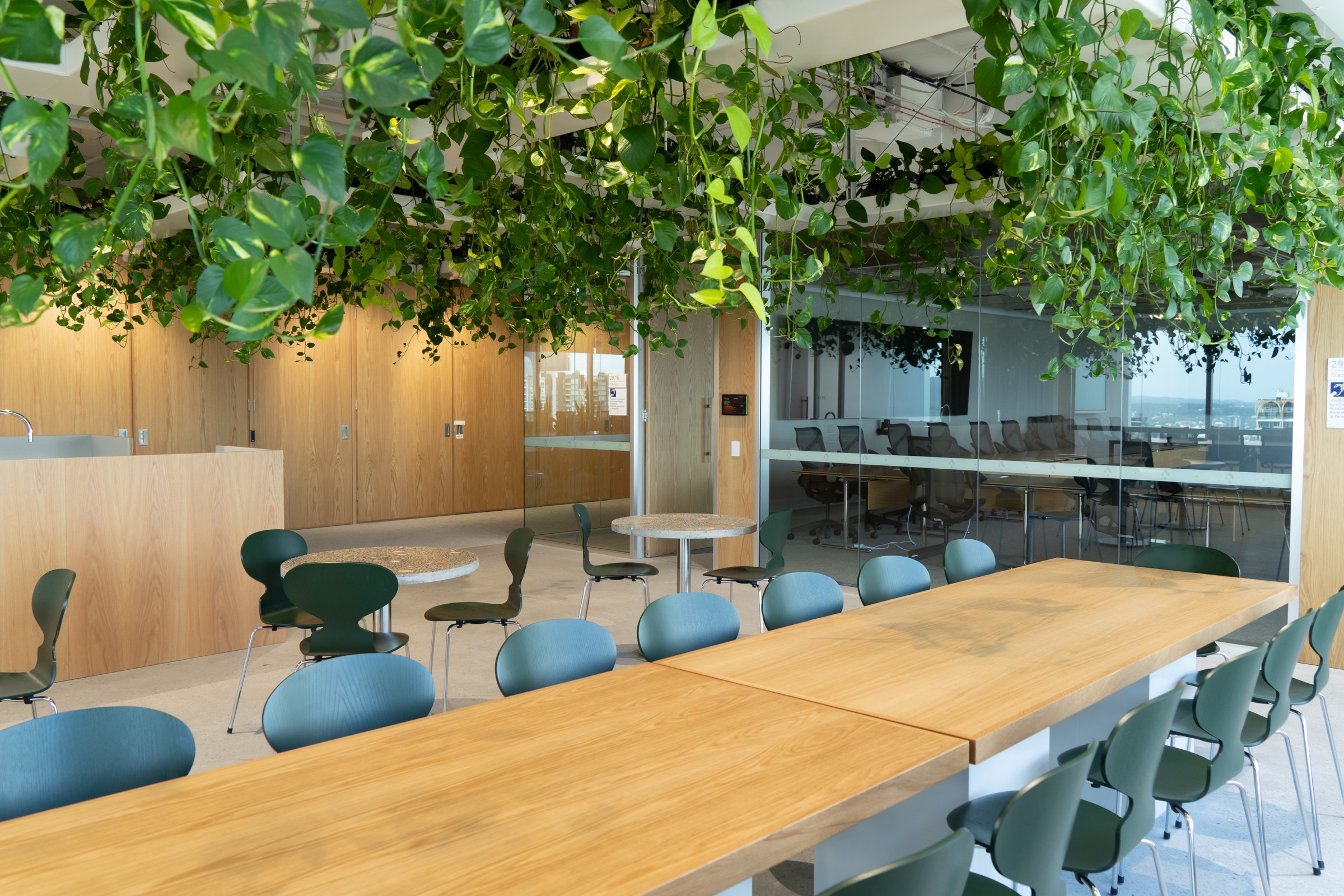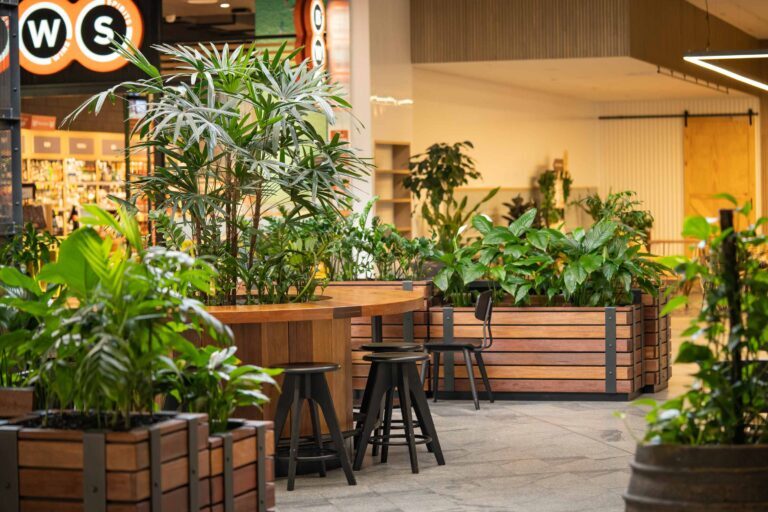Hunting for office greenery that won’t set off sneezes, headaches or “what’s that smell?” Slack threads? You’re not alone. Open-plan spaces and meeting rooms are where plants shine—but they’re also where fragrance sensitivities, pollen and WHS obligations live.
Most indoor plants are totally fine for most people. That said, a few popular choices can irritate sensitive staff—especially heavily scented bloomers and latex-bearing ficus like Ficus benjamina (weeping fig). Do we still use rubber figs? Yep. They’re beautiful and robust. We just handle them thoughtfully (see tips below). If you already know your workplace has fragrance or latex sensitivities, start with the low-risk palette below.
Our 10 allergy-friendly office plants
(Nothing is 100% risk-free—people can react to almost anything. These are low-fragrance, low-pollen, tidy growers that behave well indoors.)
1. Aspidistra elatior (Cast-iron Plant)
Why it’s great: Practically fragrance-free, rarely flowers indoors, minimal leaf drop. A corridor and meeting-room hero.
Care: Low–medium light; water when the top few cm are dry.
2. Rhapis excelsa (Lady Palm)
Why it’s great: Neat, fan fronds with very little mess and no perfume; tough in air-con.
Care: Medium to bright-indirect light; steady, moderate watering.
3. Howea forsteriana (Kentia Palm)
Why it’s great: Elegant, slow-growing, unobtrusive—height without pollen drama or scent.
Care: Medium light; let the surface dry between waters.
4. Dracaena fragrans (‘Janet Craig’, ‘Happy Plant’)
Why it’s great: Foliage-first, no perfume, tidy habit for planterscreens and focus rooms.
Care: Bright-indirect light; water every 1–2 weeks depending on season.
5. Asplenium nidus (Bird’s-nest Fern)
Why it’s great: Soft, architectural fronds; no fragrance; indoor spore release is typically negligible.
Care: Medium light; keep evenly moist, never soggy.
6. Chamaedorea elegans (Parlour Palm)
Why it’s great: Feather-soft fronds; low pollen indoors. If flower spikes appear, have your tech snip them pre-open.
Care: Low–medium light; light, regular watering.
7. Chamaedorea seifrizii (Bamboo Palm)
Why it’s great: Dense, privacy-friendly fronds; no scent; great for receptions and open-plan screening.
Care: Medium light; consistent but moderate watering.
8. Peperomia obtusifolia (Baby Rubber Plant—not a ficus)
Why it’s great: Compact, clean, non-fragrant, and generally fuss-free on desks and credenzas.
Care: Bright-indirect light; allow the top layer to dry before watering.
9. Chlorophytum comosum (Spider Plant)
Why it’s great: Fresh, clean foliage with minimal scent; pups are easy to manage. Clip any small flowers if sensitivities are known.
Care: Medium light; water when slightly dry.
10. Dracaena trifasciata (Snake Plant)
Why it’s great: Upright leaves, tiny footprint, no fragrance; thrives where other plants sulk.
Care: Low–bright-indirect light; water sparingly. (Pet-friendly offices: place out of chewing range.)
If your office already has ficus (or you love rubber figs), do this
- If someone discloses a latex sensitivity, swap nearby ficus for one of the ten plants above.
- Place away from hot-desk clusters and main traffic paths.
- Avoid pruning during business hours; wipe any sap promptly.
- Ask cleaners/techs to wear gloves when pruning/repotting.
Simple WHS-friendly maintenance habits
- Fragrance-free by design: specify foliage-first species for boardrooms/training rooms.
- Dust control: schedule quarterly leaf cleaning so dust doesn’t become an irritant.
- Dry floors, dry sleeves: closed-liner planters and after-hours watering to avoid slips and musty smells.
- Bloom watch: if a plant throws flower spikes indoors, remove them before they open to minimise pollen.
- Record it: note species and controls in your WHS risk register so everyone’s on the same page.
Want an allergy-friendly plant plan tailored to your Brisbane workplace? We can design, install and maintain everything—and swap things out quickly if someone new joins the team with sensitivities.




